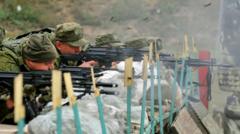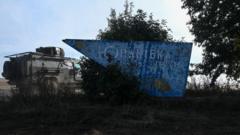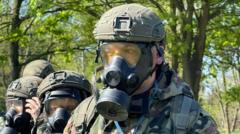The year 2024 marked a sobering high in Russian military casualties in the ongoing Ukraine conflict, with estimates suggesting upwards of 112,000 deaths. This article dissects the operational tactics leading to these losses, highlights individual stories of soldiers, and examines the broader implications for Russian military recruitment and strategy.
Russia’s Record Casualties in Ukraine: A Deep Dive into the 2024 Toll

Russia’s Record Casualties in Ukraine: A Deep Dive into the 2024 Toll
A stark analysis reveals the staggering loss of Russian military personnel in Ukraine throughout 2024, including the methodology behind the numbers and the impact on recruitment.
In 2024, Russian forces experienced unprecedented losses in the ongoing conflict with Ukraine, marking it as the deadliest year since the onset of the full-scale war in February 2022. A thorough analysis indicates that approximately 45,287 Russian soldiers lost their lives during the year, nearly three times the fatalities recorded in the invasion's initial phase. This figure surpasses even the casualties recorded in 2023, which were mainly clustered around battles for critical cities like Bakhmut.
The death toll in 2024 reflects a distressing trend: as the frontlines advanced incrementally, the monthly mortality rates rose sharply, averaging 27 Russian deaths for every square kilometre of Ukrainian territory seized. Reports from the BBC Russian Service, in collaboration with independent sources such as Mediazona, have revealed these grim statistics by meticulously compiling data from cemeteries, memorials, and other public records.
During the course of 2024, a staggering total of 106,745 Russian soldiers have been identified as having died since the invasion began, though military experts project that the actual count may reach between 164,223 to 237,211 when accounting for unreported deaths. Notably, February 20, 2024, stands out as the deadliest day, when a Ukrainian missile strike claimed the lives of 201 Russian servicemen during a medal ceremony in occupied Donetsk.
Individual narratives of soldiers illustrate the vast human cost of the war. Aldar Bairov, a 22-year-old from Buryatia, and Okhunjon Rustamov, 31, from Chita, were among those who died that day. Their stories are woven into the fabric of a conflict marked by personal tragedy and loss, as families like Rustamov's have seen multiple members perish in the line of duty.
The dogged persistence of Russian forces in the face of mounting casualties has also resulted in a shift in recruitment practices. With rising fatalities, the Kremlin has employed increased financial incentives to attract new recruits, offering bonuses as high as several times the average salary in many regions. This has led to a surge in volunteer soldiers, many of whom possess limited military experience, thus compounding the risk of high casualty rates in future confrontations.
Throughout 2024, Russian military strategy has evolved, with campaigns notably designed around territorial acquisition despite heavy losses. Analysis from the American Institute for the Study of War indicates that Russian forces captured approximately 4,168 square kilometers at a steep cost of approximately 112,000 total fatalities.
The reality of these losses is often obscured due to bureaucratic silence surrounding casualty reports. Many remain unaccounted for, buried on foreign soils, and the difficulty of retrieving bodies from active conflict zones further inflates the actual death toll.
In summary, 2024 has underscored the grim toll of warfare on military personnel, with Russia’s strategic calculus increasingly challenged by the harsh realities of recruitment and operational efficacy in Ukraine. As casualty rates climb, the impact on military morale and the potential for sustained engagement in the conflict remains uncertain.



















